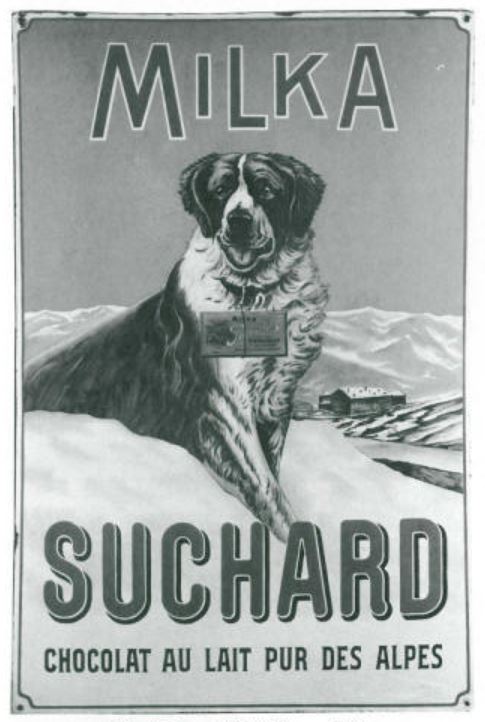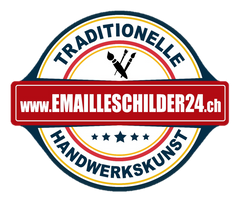
March 13, 2025
The beginnings of enamel signs in Switzerland: A look at early manufacturers and developments
Today, enamel signs are sought-after collector's items and fascinating witnesses to advertising history. But how did the production of enamel signs actually begin in Switzerland? Which manufacturers shaped the early days, and how did the enamel industry develop? in the region? In this article, we take a look at the early years of enamel signs in Switzerland and the pioneers behind these long-lasting advertising media.
What are enamel signs?
Enamel signs are made of metal, usually sheet steel, covered with a layer of enamel—a glass-like, heat-resistant coating. This combination makes the signs particularly robust, weatherproof, and colorfast, making them ideal for outdoor advertising. From the late 19th century onward, enamel signs were primarily used as advertising media for products and brands.
Switzerland and enamel production in the 19th century
Industrial enamel production began in Europe in the mid- to late 19th century. While Germany and France are considered the centers of enamel production, Switzerland also played an important role, particularly due to its proximity to German manufacturers and the early use of enamel signs as advertising media.
One well-known Swiss advertising client, for example, was the company Julius Maggi, which began using enamel signs for its soups and food products in the 1890s. These signs contributed significantly to brand awareness and are now sought-after collector's items.
Early manufacturers and pioneers
Historically, specific Swiss manufacturers of enamel signs from the early days are difficult to pin down, as many production operations were outsourced or sourced from foreign companies. Industrial production of enamel signs began in Germany in 1893 with the company Schulze and Wehrmann, which is considered one of the first major manufacturers.
In the region near Switzerland, such as Maikammer (Germany), the Ullrich family experimented with enamel production from around 1870 and operated a factory for enameled ironware. This proximity and exchange between the regions also promoted the spread of enamel signs in Switzerland.
Why are enamel signs so popular today?
Enamel signs are interesting not only for their historical significance, but also for their aesthetic and technical properties. They are durable, colorful, and have a distinctive charm that combines nostalgia and design.
Conclusion
Switzerland played an important role in the history of enamel signs, primarily as a user and advertiser. While production often took place in neighboring countries, Swiss brands like Maggi shaped the use of enamel signs as an effective advertising medium. The exact early Swiss manufacturers are less well known today, which makes the search for and research of this exciting chapter in advertising history all the more fascinating.
Interested in more historical insights and collecting tips?
Stay tuned for more articles about enamel signs and their fascinating world!
Sign up for our newsletter.
Reproduction of a MAGGI sign. Sign available in our shop.







